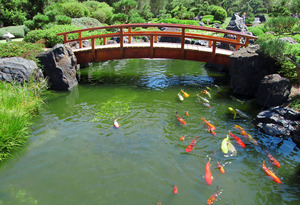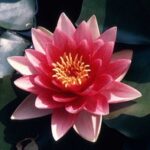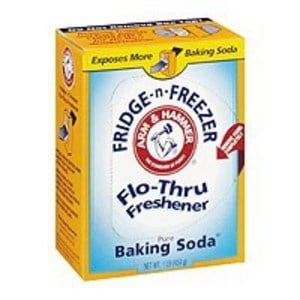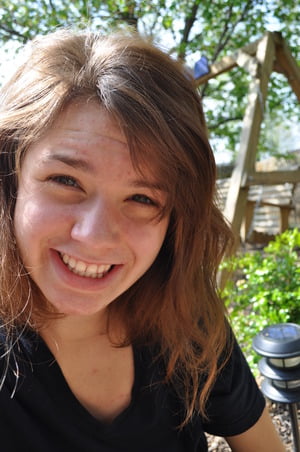Though goldfish seem inexpensive and rather hardy, you must be sure to take very good care of them as they are just as delicate as any other exotic breed. Goldfish are better than all other fish because they can withstand freezing temperatures with no damage, come in a variety of beautiful colors, are intelligent and easily trainable and grow larger than other fish.
Goldfish are cold-water fish and must be kept in the shade. Make sure, however, that if this shade comes from a tree that you scoop out dead leaves every day. Leaves that rot in the water or manage to sink to the bottom will kill the fish. Choose your goldfish wisely, as they will likely remain in the pond for the life of the pond. Goldfish have been known to greatly outlive their human owners. One goldfish in Japan was recorded to have lived over 800 years! Choose the goldfish that you think are the most beautiful.
Goldfish come in a variety of colors. You may find that the more variety of color you have, the better. DO NOT stock your small pond with any kind of koi. They may look small when you purchase them at the store, but they grow very quickly. Koi average a few feet in length and would die if kept in a small pond. If you prefer a fancy fish, try some of the many fancy breeds of goldfish such as fantails and orandas. These goldfish will average 5 to 6 inches and will not outgrow the pond. Comets and “feeder” or common goldfish are also nice and grow very large and can have quite lovely coloring. In our pond we have a large, gold, 5 inch common and a 5 ½ inch fantail with mottled coloring.
Do not put more than 3 goldfish in a small barrel pond. They will grow large quickly and are easily crowded. Fish require a certain amount of oxygen in the water which is transferred from the air on the surface of the water. If there are too many fish, there will not be enough oxygen. Also make sure that there are not too many lillypads covering the surface as these will hinder oxygen exchange as well. If you see fish gasping at the surface of the water then you know that there is a problem. You should get rid of some of the fish or pull out a few plants before the fish die.
Goldfish are wonderful to have in a pond. The consume mosquito larvae and add colorful, living beauty to your garden and your pond. Goldfish should be fed 2-3 times a day during the summer. Do not feed the goldfish during the winter.
If you live in a temperate climate, you will not need to remove the goldfish from the pond in winter. If the surface freezes over, you must make a hole to allow oxygen exchange between the air and water. NEVER break the ice with any instrument. Fish have nerve endings along their backs that are very sensitive to even the slightest movement. Breaking the ice will harm your goldfish. Instead, purchase a pond or aquarium heater that you can use outdoors. Just be sure that the heater is turned to the lowest it can be. Goldfish require the cold weather of the seasons for their life-cycles. If you cannot afford a heater, boil a pot of water and place the pot on the surface of the water so that it melts a hole in the ice.
Your goldfish will hibernate during the winter time. There will come a time as it gets colder when they just stop coming to the surface for food. When the fish stop coming, you should stop feeding. They will stay at the bottom and not come to the surface all winter. When the weather begins to warm, they will begin coming to the surface again and this is when you may resume feeding.
Do not feed your fish flake goldfish food. Fish consume too much air when eating floating flake food and it can upset their stomachs and even kill. Purchase floating pellets of the proper size. Sinking pellets will become lost in the gravel and cloud and spoil the water.
Goldfish can easily be trained to eat right out of your hand. Practice each day trying to train them to come to the surface and snatch pellets from your fingers. If you feed your fish at the same time each day, they will learn and be waiting for you before you get there.
Always watch out for frogs. If you like frogs and would rather have frogs in your pond, do not add goldfish. Frogs find them quite tasty and will even eat goldfish their own size.
Algae
Algae will be a problem in the pond from the first week that you get it started. The water will turn green and cloud up and you will be tempted to go to the store and buy chemicals. Don’t. Algae is just part of the proper cycle of a pond. Once the fish and the plants are properly established, you will see the water become clearer. The healthier the plants in the pond, the less algae you will have. Algae blooms are a proper cycle in a pond. If you purchase chemicals they will kill the algae and it will rot in the pond. This can easily kill the fish. Besides that, you will just have another algae bloom the next week and have to use more chemicals. Funny how that works. Running water will also prevent the growth of algae. Make sure that you have a proper waterfall or fountain in your pond. Add water accordingly as the water in the pond evaporates. Make sure that the water has been treated one day prior or that it sits for at least two days and be allowed to stabilize. Make sure that any dead leaves from water plants are removed. You may also have to skim the top of the water in the bio-filter to keep it clean.
Also, check out my article on how to build a fish pond in your apartment or house: http://www.associatedcontent.com/article/445740/how_to_build_a_fish_pond_in_your_apartment.html




